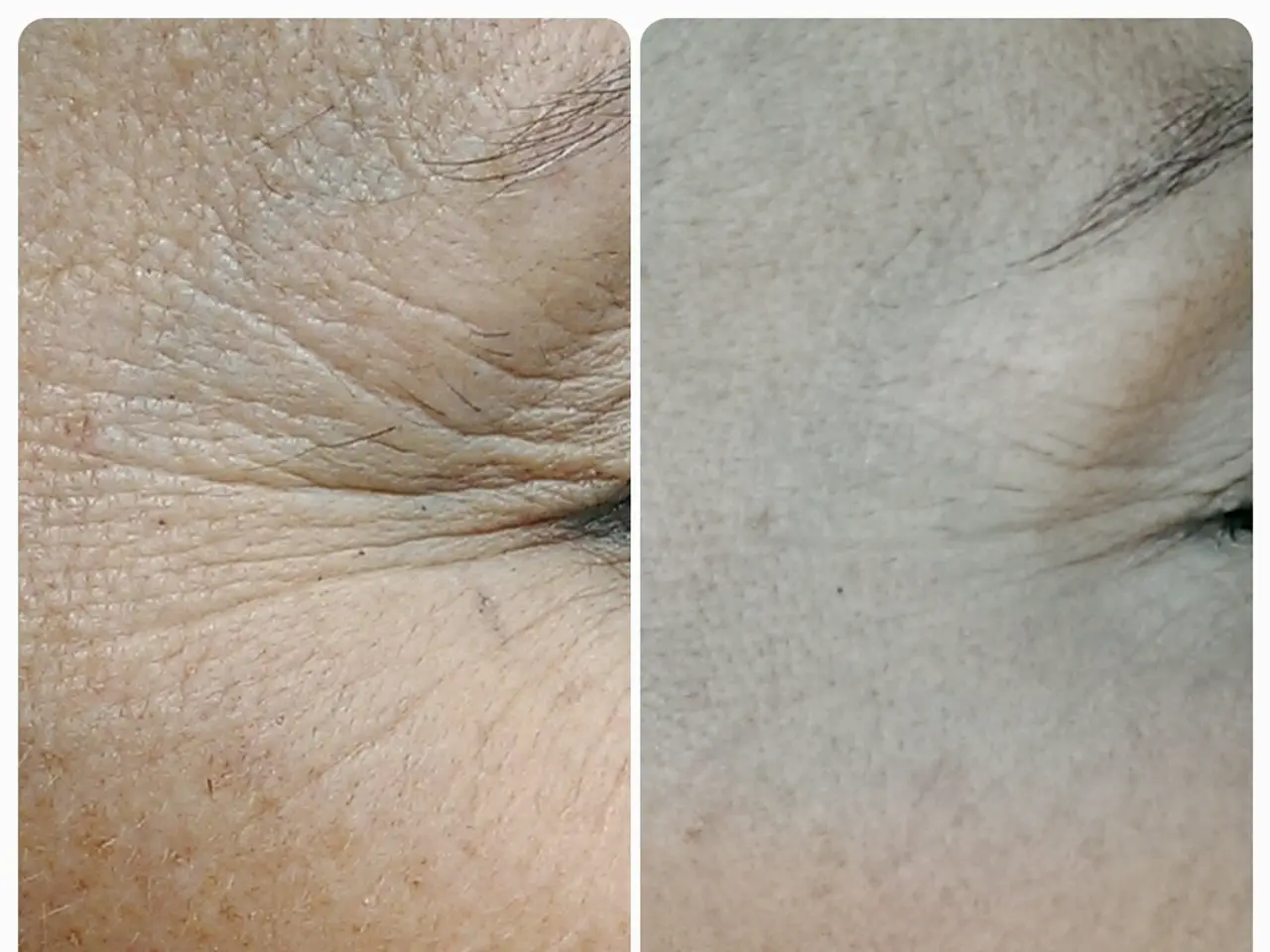Internal Anatomy Exposé: Revealing Hidden Inner Compositions
In the human body, the skin serves as a protective barrier and a city of its own, teeming with essential cells that maintain health, beauty, and vitality. This article delves into the three main layers of human skin - the epidermis, dermis, and hypodermis - and the roles they play in our overall well-being.
1. The Epidermis: The Body's First Line of Defense
The epidermis, the skin's outermost layer, acts as a protective barrier against the external environment. It is composed of keratinocytes, which mature and produce keratin, creating a tough, waterproof shield. This layer also houses cells involved in immune defense (Langerhans cells) and pigment production (melanocytes), contributing to skin color and protection against UV radiation. The epidermis prevents water loss and helps block pathogens, ensuring our bodies remain safe and hydrated[1][2][4].
2. The Dermis: The Powerhouse of Structure and Function
Located beneath the epidermis, the dermis is the thickest layer composed mainly of collagen and elastin fibers that provide structural strength and flexibility. It contains blood vessels that nourish the skin and assist in temperature regulation, as well as hair follicles, sweat glands, oil glands, nerve endings, and sensory receptors responsible for sensations like touch, heat, and pain[1][2][3][5]. The dermis, with its wealth of components, is like the heart of the city, keeping the skin alive, healthy, and responsive.
3. The Hypodermis (Subcutaneous Layer): The City's Infrastructure
The deepest layer, the hypodermis, is made largely of fat and connective tissue. It serves as a cushion for underlying muscles and bones, acts as insulation to conserve body heat, and serves as an energy reserve. Adipocytes in the hypodermis resemble tiny pillows filled with fat, providing insulation and padding, much like the city's infrastructure that supports and protects its buildings[2][3][5].
Together, these layers enable the skin to protect the body, regulate temperature, sense environmental stimuli, and contribute to immune defense[1][2][3][4][5]. The skin, like a city, has a variety of cells each playing a crucial role in maintaining health, beauty, and vitality.
Sweat glands release moisture onto the skin to cool the body down when it gets hot, much like a city's cooling systems. The skin's structures (hair follicles, sweat glands, sebaceous glands, muscle fibers) also contribute to the skin's appearance and protection from the elements. Sebaceous glands secrete an oily substance called sebum, which keeps the skin and hair hydrated and protected. Hair follicles are the tiny pockets in the skin that grow hair and protect the scalp from harsh elements.
In conclusion, the skin, with its intricate layers and diverse cells, is a vital organ that plays a crucial role in our overall health and well-being. It protects us from the external environment, regulates our body temperature, and contributes to our immune system. Understanding the functions of each layer and the cells within them allows us to appreciate the complexity and importance of our skin.
[1] https://www.ncbi.nlm.nih.gov/books/NBK279160/ [2] https://www.ncbi.nlm.nih.gov/books/NBK532870/ [3] https://www.ncbi.nlm.nih.gov/books/NBK553162/ [4] https://www.ncbi.nlm.nih.gov/books/NBK532874/ [5] https://www.ncbi.nlm.nih.gov/books/NBK553163/
1. The synergy of Science and Health-and-wellness in Skin Care
Leveraging our understanding of the skin's structure, roles, and functions, skin care products and treatments are designed to maintain and improve skin health. The development of effective skin care products includes the exploration of elements like the protective properties of collagen and elastin, as well as the importance of sebum and sweat for hydration and temperature regulation.
2. Empowering Women's Health through Skin-care Awareness
As women's health encompasses not only reproductive health but also overall well-being, skin care becomes a crucial aspect to consider. Being aware of the skin's functions, its vulnerabilities, and the effects of age, lifestyle, and environmental factors allows women to make informed decisions about their skin care routines and product choices. In addition, proper skin care can help strengthen the skin's ability to protect against UV radiation, thus reducing the risk of certain skin cancers and premature aging.




